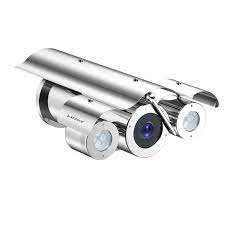In industries where flammable gases, vapors, or dust are present, ensuring worker safety is paramount. Intrinsically safe cameras have become crucial tools for enhancing safety protocols in hazardous work environments, offering a range of benefits that protect both personnel and property.
One of the primary advantages of intrinsically safe camera is their design, which minimizes the risk of igniting explosive atmospheres. These cameras are engineered to operate safely in environments where traditional equipment could pose a fire hazard. By utilizing specialized circuitry and robust housing, they prevent electrical sparks and heat from reaching dangerous levels, significantly reducing the risk of accidents in volatile settings such as oil refineries, chemical plants, and mining operations.
Additionally, intrinsically safe cameras provide high-quality imaging capabilities that are essential for effective monitoring. Equipped with advanced technologies, these cameras can deliver clear, high-resolution images, allowing operators to identify potential hazards quickly. This clarity is vital for surveillance, enabling real-time decision-making that can prevent incidents before they escalate. The ability to monitor operations continuously ensures that safety protocols are adhered to, fostering a culture of vigilance.
The integration of intrinsically safe cameras into existing surveillance systems also enhances overall operational efficiency. With remote access capabilities, operators can view live feeds from secure locations, minimizing the need for personnel to enter hazardous areas. This remote monitoring not only prioritizes safety but also allows for timely responses to any irregularities detected in the footage, ensuring swift action in critical situations.
Moreover, the use of intrinsically safe cameras contributes to regulatory compliance. Many industries are subject to strict safety regulations, and implementing these specialized cameras can help organizations demonstrate adherence to safety standards. This compliance not only safeguards workers but also protects the organization from potential legal liabilities.
In conclusion, intrinsically safe cameras are vital for maximizing safety in hazardous work environments. Their ability to prevent ignition hazards, combined with high-quality imaging and remote monitoring capabilities, makes them essential tools for maintaining a secure workplace. By investing in these specialized cameras, organizations can enhance their safety protocols, ensuring the well-being of their employees while promoting operational efficiency.



